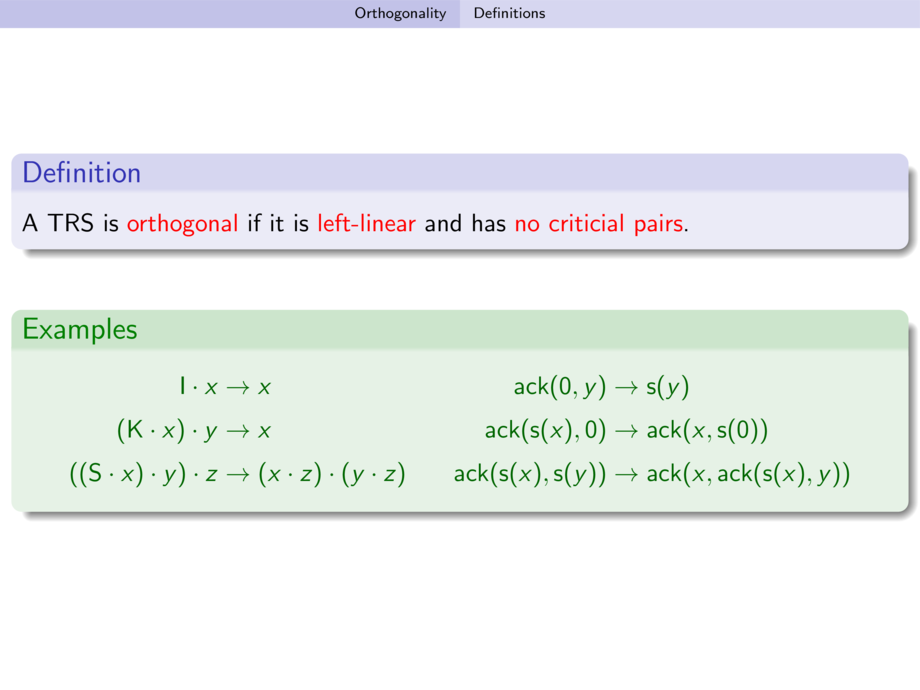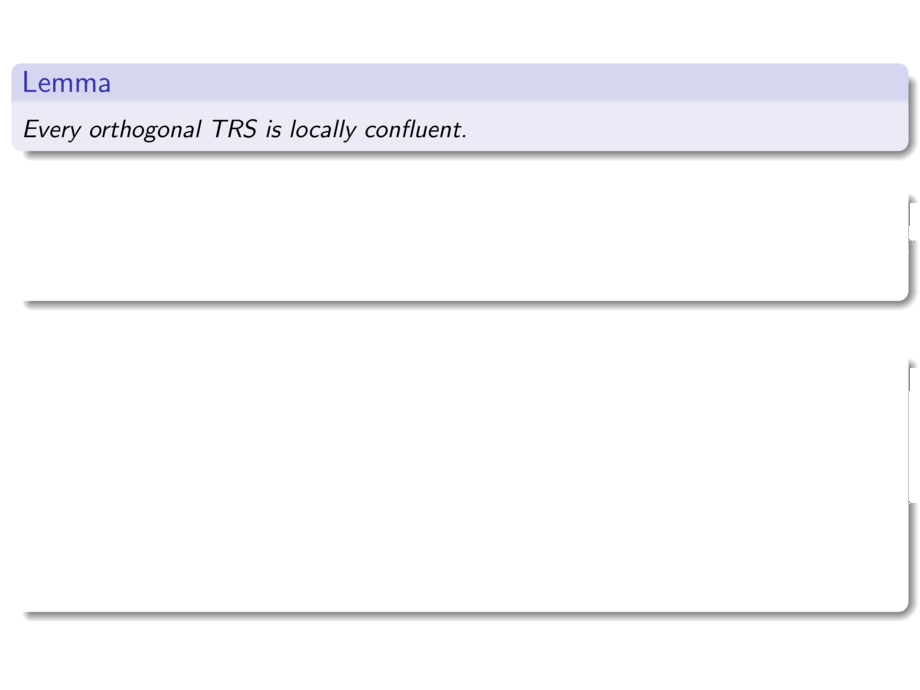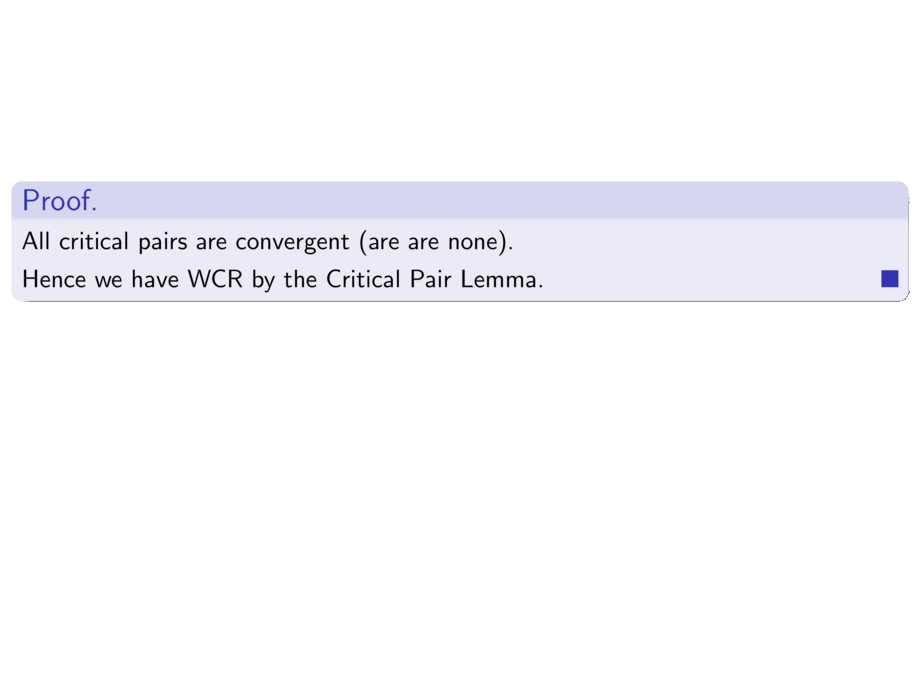



































































































68/145
\begin{frame}
\small
\begin{lemma}
\smallskip
Every orthogonal TRS is locally confluent.
\end{lemma}
\pause
\begin{proof}
All critical pairs are convergent (are are none).
\smallskip
Hence we have WCR by the Critical Pair Lemma.
\end{proof}
\medskip\pause
\begin{theorem}
\smallskip
Every orthogonal TRS is \alert<1>{confluent} \\[-3ex]
\[
\qquad\qquad\qquad\begin{tikzpicture}[on grid,baseline=(1).baseline]
\node (1) {$\strut s$};
\node (2) [below left=of 1] {$t$};
\node (3) [below right=of 1] {$u$};
\node (4) [below right=of 2] {$\strut \alert<2>{v}$};
\node (5) [left=of 1] {\makebox[3cm][l]{$\strut\forall s,t,u$}};
\node (6) [left=of 4] {\makebox[3cm][l]{$\strut\alert<2>{\exists v}$}};
\draw[->>] (1) -- (2); % node[midway,sloped,above] {${}_*$};
\draw[->>] (1) -- (3); % node[midway,sloped,above] {${}_*$};
\draw[dotted,->>] (2) -- (4); % node[midway,sloped,below] {${}^*$};
\draw[dotted,->>] (3) -- (4); % node[midway,sloped,below] {${}^*$};
\end{tikzpicture}
\]
\end{theorem}
\pause
For orthogonal TRSs there is a canonical way to compute common reduct\ldots
\end{frame}

